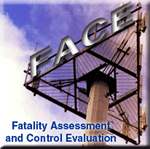|
 Reader cautions about interchanging fall restraint and fall protection Reader cautions about interchanging fall restraint and fall protection
It's refreshing to see that later NIOSH FACE reports reflect the investigators' emergent knowledge of tower industry language so that the information is relative to those in the tower erection and maintenance profession.
At the risk of sounding like one of those bulletin board spelling Nazis, it's important to provide the correct tower terminology in the FACE assessments. Since this is such an evolving industry, it might be beneficial if the investigators would ask for the volunteer services of a tower erection company safety professional to review a draft to assist in their final presentation.
In this case, it was reported that the employee fell from the tower after he apparently was attempting to connect his "fall protection" lanyard. This lanyard was previously described as a "positioning lanyard". Positioning lanyards or fall restraints are not to be used in lieu of fall arrest lanyards.
In order to maintain 100% fall protection you need an anchor point, body harness and connecting devices. The system only comes into play when the climber actually falls.
The report goes on to say that "If these types of fall protection are not feasible, safety nets should be installed at the worksite in accordance with 29 CFR 1926.105(a) which states that safety nets shall be provided when workplaces are more than 25 feet above the ground where the use of ladders, scaffolds, catch platforms, temporary floors, safety lines, or safety belts is impractical."
It is my understanding that OSHA agrees that providing safety nets would create a greater hazard on structure loading and in most cases would be impossible due to the nature of tower erection - and this CFR is no longer used for workplace safety guidance or citations.
I believe it would be beneficial if NIOSH would review these reports and show changes where their content, suggestions and recommendations are in conflict with acceptable industry tower-speak or current OSHA regulations.
Darlene Somora
|